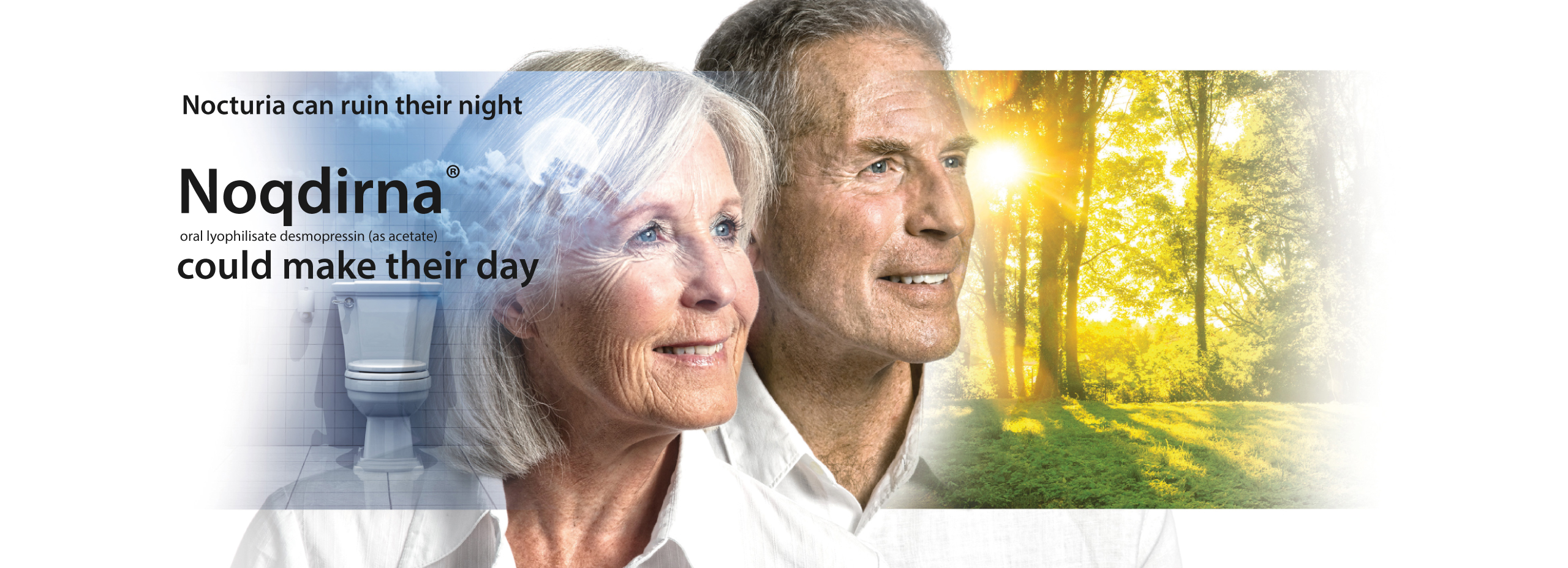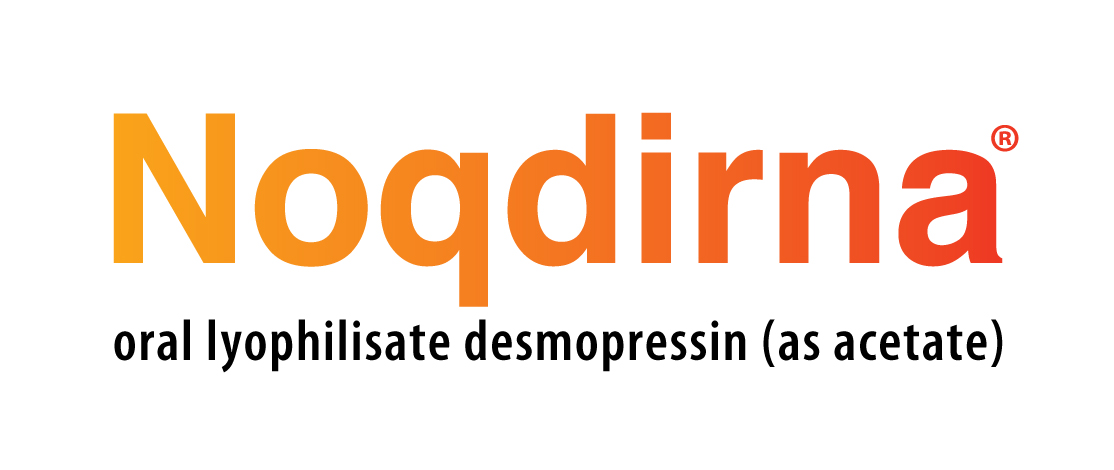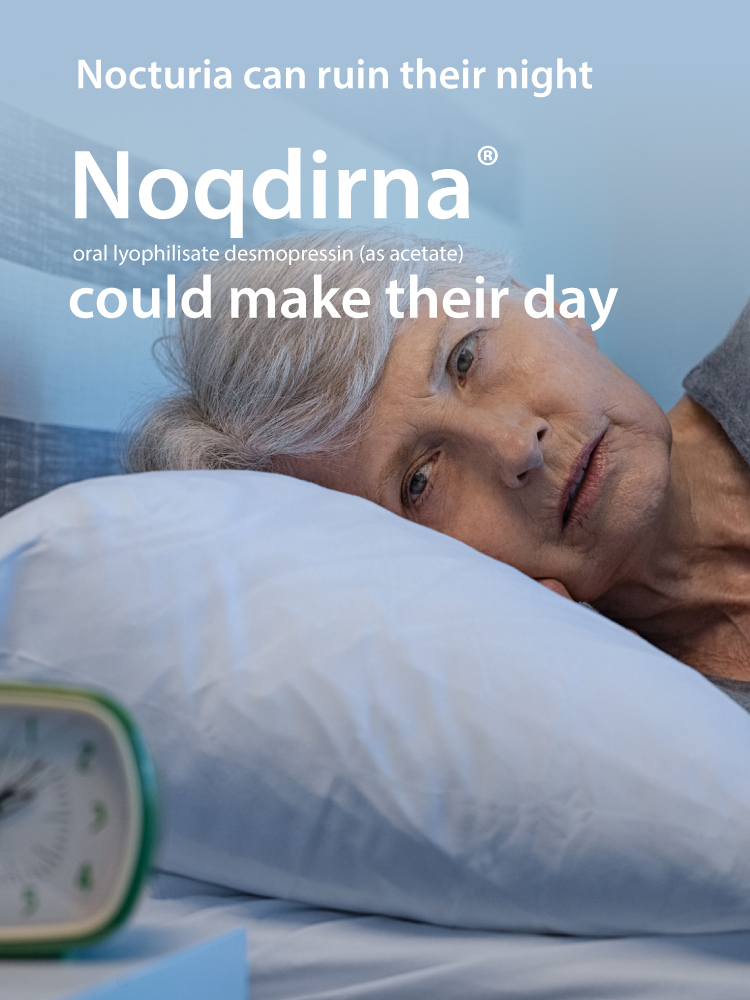





Adverse Event reporting information can be found in footer
Request a Meeting
Nocturnal polyuria is often the underlying cause of nocturia.1 Noqdirna is proven to reduce bothersome night time voiding,2,3 and is the only licensed medication for the treatment of nocturnal polyuria for adults, including the over 65s.4,8
(oral lyophilisate desmopressin [as acetate])
Noqdirna improves clinical outcomes and quality of life by reducing the number of nocturnal voids and nocturnal urine volume, improving patient response rates and lengthening the first uninterrupted sleep period.2,3
Learn More
Nocturia is defined as waking up to void one or more times during the night.5 Waking up two or more times is considered bothersome,6 affecting up to 60% of people over 70 years old and 17% of people between 20-40 years old.7
Learn More ➔Are your patients suffering from increased night-time voiding? Find out how to identify patients at-risk of nocturnal polyuria and patients who could benefit from Noqdirna.
Learn More ➔Find out more about Noqdirna, the only licensed medication for the treatment of idiopathic nocturnal polyuria for adults, including the over 65s.4, 8
Learn More ➔Due to its formulation, Noqdirna can be offered at gender-specific lower doses of desmopressin compared with existing formulations, without the same risk of hyponatraemia in the elderly (65 and over).2-4
Women: 25 microgram daily, one hour before bedtime, administered sublingually without water.8
Men: 50 microgram daily, one hour before bedtime, administered sublingually without water.4
Watch this short clip which shows how quickly the sublingual formulation dissolves versus the tablet formulation.
Job Code: UK-NOQD-2000015 - Date of preparation: January 2023